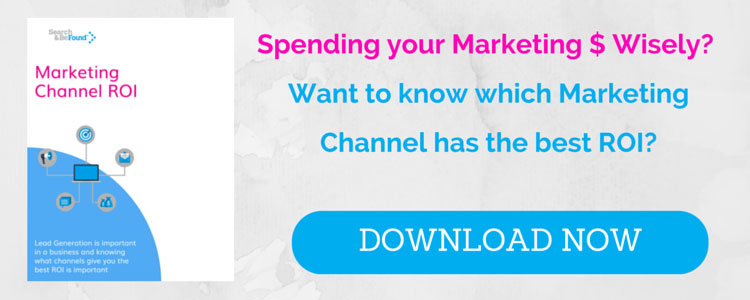Next time, just before you sign on the dotted line for another full page advertisement, an expensive yellow pages listing, a $40K per month billboard, or a pallet load of printed flyers, do yourself a simple favour.
Walk to your nearest window, or along the nearest main street, or perhaps just look around you right now.
Pretty much everyone has their face buried in their phone. So even though your potential market is addicted to Google searches, you are contemplating throwing more money into marketing’s equivalent to a chiselled tuit. Lead generation in business needs to evolve to match how people buy.
The shift in power for business
Over time there has been a shift of power in the process of trade.
In times past, the power was in the seller’s hands i.e. the seller had the product or service and the buyer perceived their need or want for it.
Currently, we have experienced a shift in power into the buyer’s hands. i.e. buyers now have access to endless information at their fingertips in regard to products and services that guide them through the buyer's journey.
The internet has infinite detailed product specifications, product comparisons, company offerings, pricing options, background knowledge etc. It is a common theme nowadays that often a buyer possesses more knowledge than the seller about the unique selling points (USP) of a goods or service.
It is common for me to have a conversations with employees at automotive dealerships about this very topic.
I get asked: How do customers walk into the dealership and know more about the specifics of our vehicles than I do?
The Buyer Journey
As online marketers, we can recognise the different stages a buyer transcends through during a purchase – we label this the buyer journey.
We categorise these stages of the buyer’s journey into 3 separate sequential phases
- Awareness
- Consideration
- Decision
Although they are relatively self-explanatory a brief outline would be :
- Awareness……….the first phase of the buyer’s journey where the buyer first perceives that they have a problem or a need.
- Consideration……….is the second phase of the buyer’s journey where the buyer is searching for a solution to their problem or need.
- Decision……….is the last phase of the buyer’s journey where the buyer is choosing a remedy or solution to their perceived problem or need. This is where comparisons could be made in selecting the right solution to their problem or need.
A marketer can publish content in the form of:
- blogs
- white papers
- emails
- checklists
- ebooks
- infographics
- webinars
- podcasts (and other formats)
The power is still in the buyer’s hands.
If we take a step back for a minute and consider my observations that I wrote about in the introduction to this blog, as we look around in our normal environment we see people are scrolling away on their smartphones. Most probably they are searching for solutions to a real life problem or need and are somewhere in the buyer’s journey.
As marketers and business owners it would be silly not to take notice and acknowledge that the way people buy has now changed.
"67% of customers have decided on their purchase before speaking to a salesperson!"
The basic principles of marketing have stayed the same but the techniques and processes have evolved – we too need to evolve to stay relevant.

.png?width=320&height=132&name=sbf%20powered%20by%20hubshots%20(1).png)

